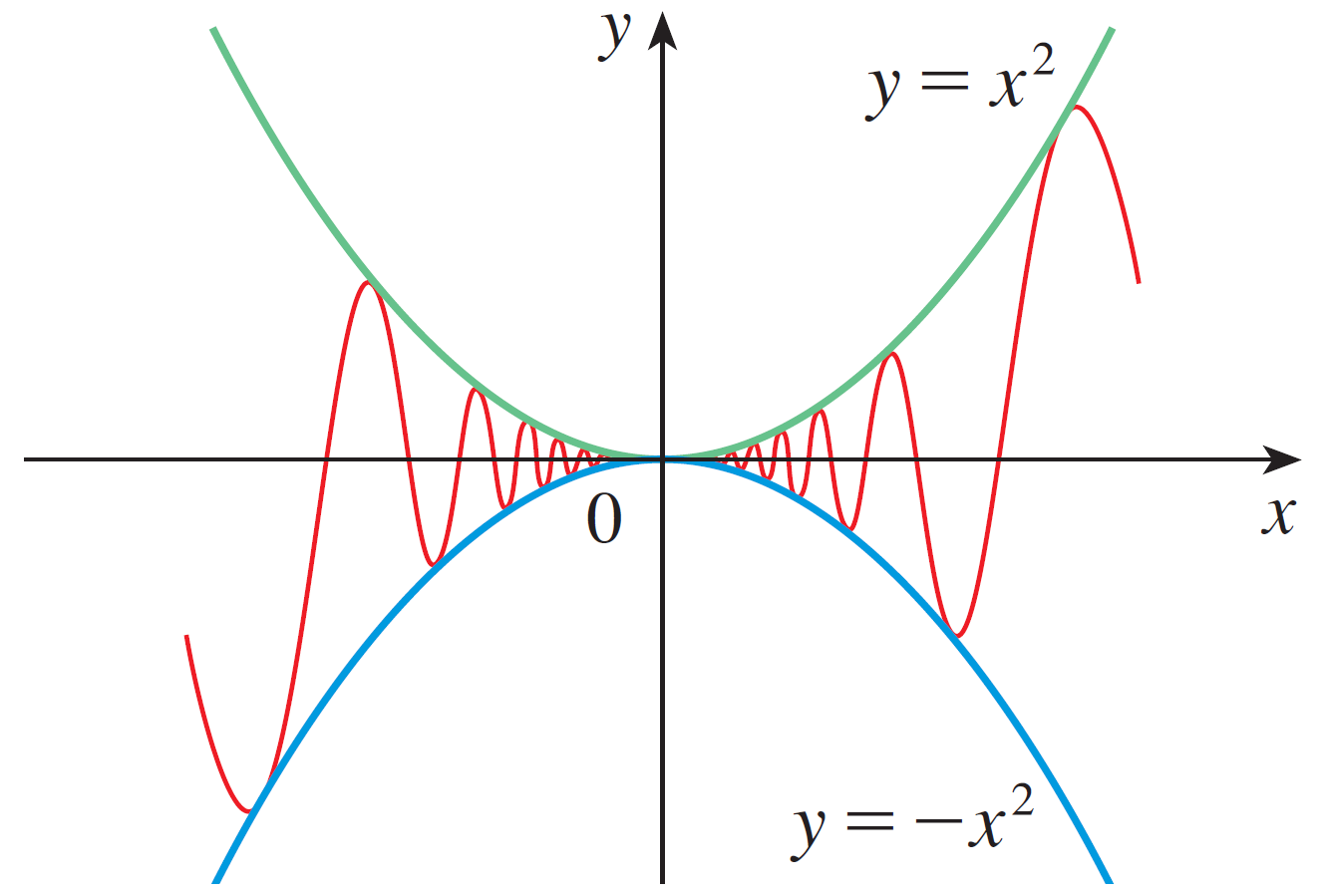2.4: Limits: Algebraic Methods
The Limit Laws
We know how to use a table and the graph to find a limit. Let's see some algebraic properties of limits.
- $\displaystyle\lim_{x\rightarrow a} [f(x) + g(x)] = \lim_{x\rightarrow a} f(x) + \lim_{x\rightarrow a} g(x)$
- $\displaystyle\lim_{x\rightarrow a} [f(x) - g(x)] = \lim_{x\rightarrow a} f(x) - \lim_{x\rightarrow a} g(x)$
- $\displaystyle\lim_{x\rightarrow a} c\cdot f(x) = c\lim_{x \rightarrow a} f(x)$
- $\displaystyle\lim_{x \rightarrow a}[f(x)\cdot g(x)] = \left[\lim_{x\rightarrow a}f(x)\right]\cdot\left[\lim_{x\rightarrow a} g(x)\right]$
- $\displaystyle\lim_{x\rightarrow a} \frac{f(x)}{g(x)} = \dfrac{\lim_{x \rightarrow a} f(x)}{\lim_{x \rightarrow a}g(x)}$ if $\displaystyle\lim_{x\rightarrow a}g(x) \neq 0$.
Law 1 and 2 says you can just put the limit in front of each term.
Law 4 says you can put the limit in front of each factor.
 Find
Find - $\displaystyle \lim_{x \rightarrow -2} [f(x) + 5g(x)]$
- $\displaystyle \lim_{x \rightarrow 1} [f(x) \cdot g(x)]$
- $\displaystyle \lim_{x \rightarrow 2} \dfrac{f(x)}{g(x)}$
- From the graphs we can see \[\lim_{x \rightarrow -2} f(x) = 1 \qquad \lim_{x \rightarrow -2} g(x) = -1\] So by using the limit laws we see \begin{align}\lim_{x\rightarrow -2} [f(x) + 5g(x)] &= \lim_{x\rightarrow -2} f(x) + \lim_{x\rightarrow -2} [5g(x)] \\&= \lim_{x\rightarrow -2} f(x) + 5\lim_{x \rightarrow -2}g(x) \\&= 1 + 5\cdot (-1) = -4\end{align}
- $\displaystyle\lim_{x\rightarrow a} c = c$
- $\displaystyle\lim_{x\rightarrow a} x = a$
- $\displaystyle\lim_{x\rightarrow a} x^n = a^n$
- $\displaystyle\lim_{x \rightarrow a}\sqrt[n]{x} = \sqrt[n]{a}$
- If $f(x)$ is any function, then $\displaystyle\lim_{x\rightarrow a} \sqrt[n]{f(x)}= \sqrt[n]{\lim_{x \rightarrow a} f(x)}$.
- $\displaystyle \lim_{x \rightarrow 2} x^3$
- $\displaystyle \lim_{x \rightarrow 4} 5x^{2}$
- $\displaystyle \lim_{x \rightarrow 1} (5x^4 - 2)$
- $\displaystyle \lim_{x \rightarrow 1} 2x^3\cdot \sqrt{x^2 + 7}$
- $\displaystyle \lim_{x \rightarrow 1} \dfrac{2x^2 + 1}{x + 1}$
First Look at Indeterminate Forms
- Replace the original function $f(x)$ with a new function $g(x)$ that takes on the same values as the original function everywhere except at $x = a$
In practice, this means you need to ignore the limit for now and first do some pre-calculus:- Cancel out common factors.
- Rationalize the numerator or denominator.
- Simplify the expression.
- Potentially all of these.
- Then find $\displaystyle\lim_{x\rightarrow a} g(x)$ instead.
Additional Properties of Limits
Recall:
Limit laws also hold for one-sided limits. This means instead of using the table technique, we can now check both left- and right-handed limits are equal with algebra!
Sometimes limits can't be computed. But if we trap the function within two other functions that we know the limit of, we can find the limit of the original function itself.
If $f(x) \leq g(x) \leq h(x)$ when $x$ is near $a$ (except possibly at $a$) and we know \[\lim_{x\rightarrow a}f(x) = \lim_{x\rightarrow a}h(x) = L\] then $\displaystyle \lim_{x\rightarrow a}g(x) = L$.

Hint: You cannot evaluate $\displaystyle\lim_{x\rightarrow 0} \sin \dfrac{1}{x}$ because it does not exist:

Limits of Trigonometric Functions
Here are a few limits to know.
Notice for both $\sin \theta$ and $\cos \theta$ their limit values actually see what happens at $a$. The next section will describe why.
The core idea for trigonometric limits is to rewrite the expression in terms of limits you know how to evaluate.